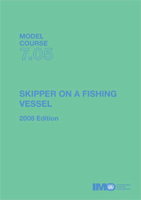E-books
Ships and Naval Architecture
£36.00 £40.00
Revised 2020 edition of the IMarEST publication describes the key features of ships, the stresses of the marine environment and the science of naval architecture.
MEP Series: Volume 2 Part 17: Marine Low Speed Diesel Engines
£22.50 £25.00
New revised edition of MEP Series volume 2, part 17. Published: February 2020.
K116E e-reader: ISPS Code, 2003 Edition
£16.20 £18.00
Maritime Training On Board, 5th Edition
£67.50 £75.00
A practical handbook to be used by trainee, trainer and manager alike, Maritime Training On Board is a comprehensive guide to the major elements involved in on board training and is designed to ensure an effective and dynamic learning environment. This Fifth Edition is updated to incorporate both the recent technological advances to maritime training, and the entry into force of the 2010 Manila Amendments to the STCW Convention.
Hatch Cover Maintenance and Operation: A Guide to Good Practice - 2nd Edition
£27.00 £30.00
This unique illustrated guide explains the fundamental importance of weather tight hatch covers to the safe and profitable operation of cargo ships. Poorly maintained or secured hatch covers can result in total losses in heavy seas and are one of the principal sources of cargo damage claims.
Techniques for Ship Handling and Bridge Team Management
£44.99
Hiroaki Kobayashi has trained 1500 mariners in ship handling over twenty years and he has systematized the methods of safe navigation into nine elemental techniques. Taking a rigorous and scientific look at good practice and attitudes, good seamanship can be viewed as a series of concrete technical functions, which can be in terms of competencies.
Practical Marine Electrical Knowledge, 4th edition
£67.50 £75.00
This book's objective is to help marine and electrical engineers acquire the knowledge required by STCW for management and operational level endorsements and to become more familiar with various electrical applications that can be found on board ship.
Reeds Vol 14: Stealth Warship Technology
£50.00
First book to give an insight into a growing area of interest - stealth warship technology - which is crucial for future developments in warship construction. It demonstrates the importance of materials used in warship construction and how this influences all of a naval platform's design parameters.







































